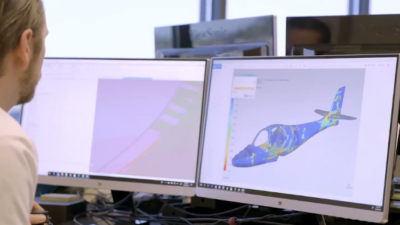With millions of different “connected” devices and massive amounts of data, it can be hard for users to make good use of the Internet of Things (IoT) potential. Users need to use analytics to make good use of that data.

The business potential of the Internet of Things (IoT) can get lost in the endless discussions about the technologies that underpin it. So how do companies actually realize the business value of the Internet of Things?
First, let’s start with some basic definitions:
- Internet of Things (IoT) is the maturation of the Internet in which everyday objects or devices (things) have network connectivity, allowing these objects or devices to send and receive data about their operations.
- Internet of Everything (IoE) is a broader term that refers to devices and consumer wearable products connected to the Internet and outfitted with expanded digital features. The IoE connects devices and humans.
With millions of different "connected" devices and massive amounts of data, there is inevitably lots of confusion. Users need to determine what to do with that wealth of data and how to implement it.
Connected doesn’t mean smart
Being able to capture, store and manage the data created by connected devices and humans creates amazing possibilities. That data by itself isn’t useful unless analytics are applied to help the user see trends, outliers, patterns and any other imbalances. Another example would be a "connected" city, which is comprised of a wide range of devices (traffic lights, parking meters, weather instruments, etc.) and video cameras (traffic, pedestrian and bike traffic flow) generating data about city operations.
A user could combine these sensor and video-generated data with other data sources, such as social media, city reports, and local events to create a rich perspective on the city’s activities, problems, and overall economic and social vitality.
However, having all this connected data about the city or about individual data does not mean that the data is smart.
Getting smart with the IoT
Getting smart starts by understanding the city’s key business initiative or business objective. Each grouping of decisions equates into a use case, or the "how" we will accomplish the "what" of the business initiative.
What data should be considered?
Once the decision has been determined, the next step is to brainstorm the questions stakeholders need to answer in support of key decisions.
This process will help to identify variables and metrics that might be better predictors of the decisions we are trying to make. While most organizations have a good handle on the "descriptive" (what happened?) questions, the business stakeholders struggle with the "predictive" (what is likely to happen?) and the "prescriptive" (what should be done?) questions.
Brainstorming predictive and prescriptive questions typically uncovers numerous new data sources that are worthy of consideration. And this is a key point: all data sources are worthy of consideration. Do not filter the data sources at this point in the process.
Next, the business value is assessed along with the implementation feasibility of each of the brainstormed data sources. This is where the business value is determined and the implementation feasibility (over the next nine to 12 months) of each of the data sources.
What analytics should be used?
The final step is testing different analytic models that might yield the optimal decisions. Data enrichment techniques such as RFM (recency of activities; frequency of activities; monetary value of activities) will be employed to transform base metrics into potentially actionable metrics.
It’s not unusual to test 10 to 20 different analytic models using the wealth of base and transformed metrics to isolate the ones that yield the best results and goodness of.
For example, the analytic algorithms listed below might be tested:
- Association analytics to identify events that tend to happen in combination or identifying the association between one event that might lead to another event
- Time decomposition to identify events that are driving traffic jams
- Behavioral analytics to identify and quantify the impact in changes in driver and traffic behaviors
- Sentiment analysis to analyze social media data to uncover areas of constituent dissatisfaction and under-performance
- Cluster analysis to identify groups of drivers and/or events that impact traffic flow.
Transitioning from connected to smart takes a lot of upfront work, but the more work that is invested in identifying, understanding and supporting the key decisions necessary to support the targeted business initiative, the more productive the data science will be.
In the end, all of this connected IoT data is only valuable if it is being used to make better decisions.
James Norman is UK Public Sector CIO at EMC. This article originally appeared at Internet of Business. Internet of Business is a CFE Media content partner. Edited by Chris Vavra, production editor, CFE Media, [email protected].
ONLINE extra
See additional stories about the Internet of Things (IoT) linked below.


